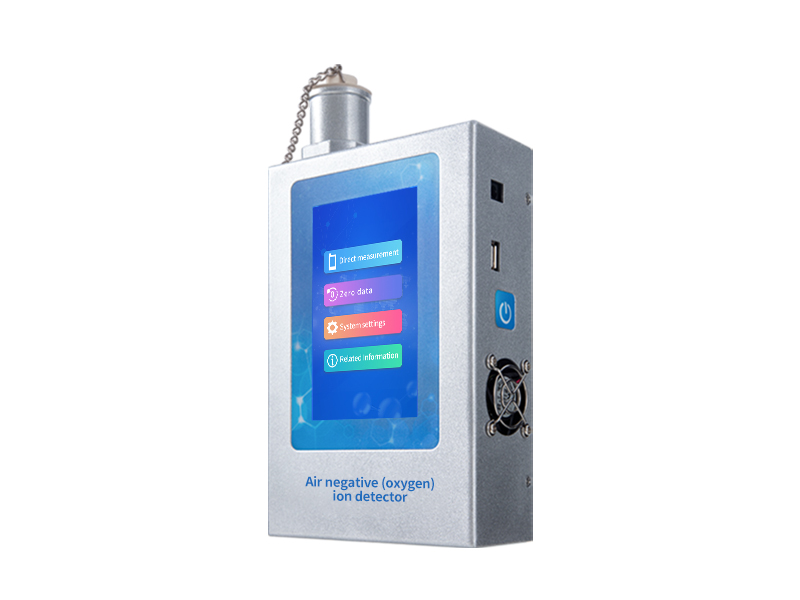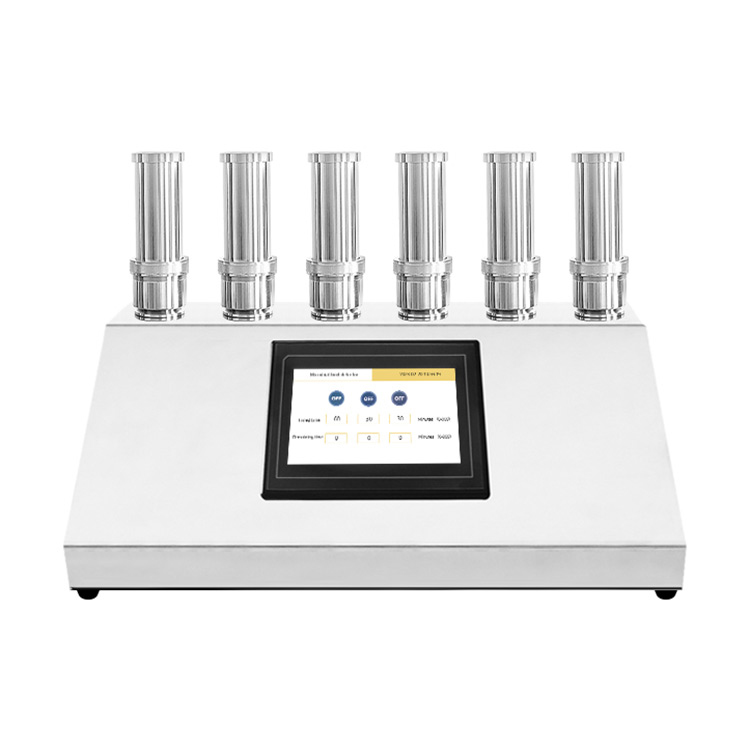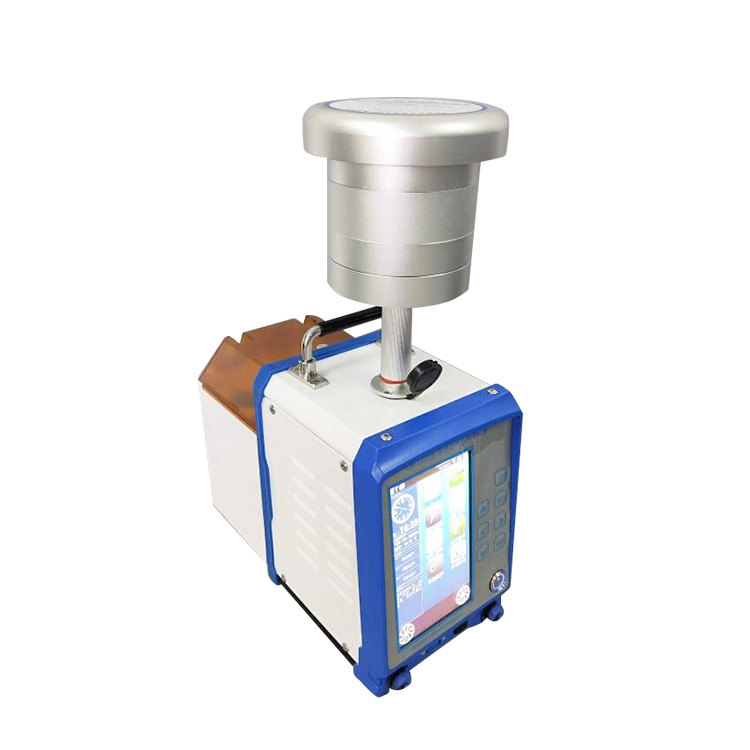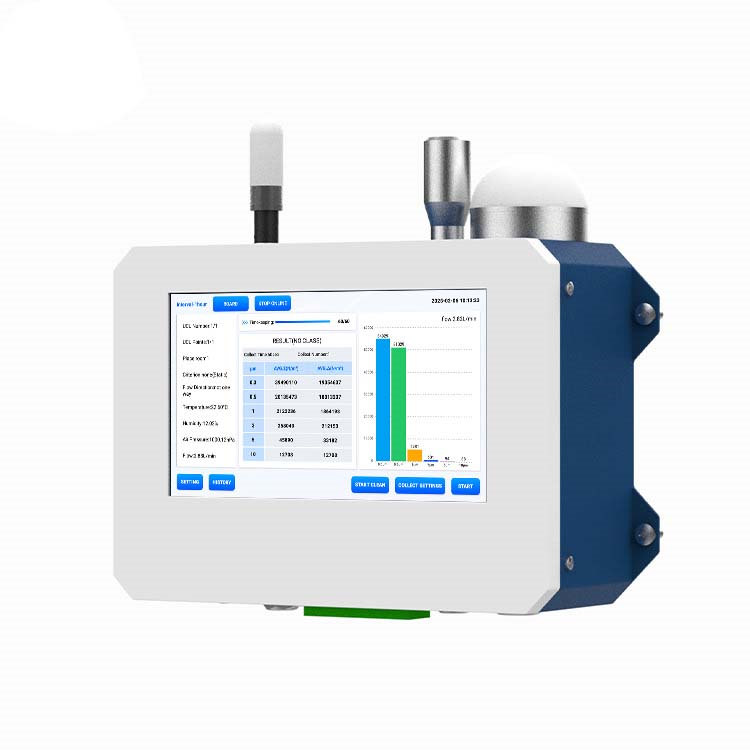Product Center
- Negative oxygen ion detector
- Dust particle counter
- Air Bacteria Sampler
- Biological aerosol detector
- Infrared CO/CO2 analyzer
- Microbial Air Monitoring Systems
- Microbial aerosol concentrator
- Environmental air comprehensive sampler
- Mercury meter
- Trace sulfur analyzer
- Bacterial Collector
- Quantitative sampling robot
- Emanometer
- Microbial limit tester
Negative Oxygen Ion Detector: Precision and Portability Combined
Source:Hengmei Environmental Sanitation Instrument Network Update time:2025-09-09 16:50:31
In today's world where air quality is increasingly emphasized, negative oxygen ions, known as "air vitamins," have become an important indicator for evaluating environmental quality. The multi-functional environmental negative oxygen ion detector integrates the detection of negative oxygen ions, formaldehyde, PM2.5/PM10, and temperature and humidity. Utilizing advanced technologies such as the cylindrical capacitive inhalation method, it achieves comprehensive and high-precision monitoring of air quality.

Core Technical Principles and Instrument Features
1. Cylindrical Capacitive Inhalation Method Principle
The multi-functional environmental negative oxygen ion detector employs the capacitive inhalation method for negative ion detection. Its core technology includes:
Polarized Electric Field: A quantitative voltage (typically 12V) is applied to the polarization plate of the ion sensor.
Ion Capture: When air passes through the sensor at a constant flow rate (0.6 m/s), small-sized negative ions are deflected under the electric field.
Charge Measurement: The charge quantity of captured ions is measured via a precision circuit.
Concentration Calculation: Negative ion concentration (adjustable from 0 to 10 million/cm³) is calculated based on the relationship between charge quantity and flow rate.
Compared to traditional parallel plate detectors, the cylindrical structure offers higher capture efficiency and stronger anti-interference capabilities.
2. Multi-Parameter Integrated Detection
The instrument achieves synchronous monitoring of multiple parameters through modular design:
Formaldehyde Detection: Electrochemical sensor (0-5 ppm, accuracy ±5%).
Particle Matter Detection: Laser scattering principle (PM2.5/PM10, 0.3-10 μm).
Temperature and Humidity Sensor: Digital sensor (temperature ±0.5°C, humidity ±3% RH).
Technical Advantages
1. High Precision and Stability
Anti-Interference Design: Metal casing and electromagnetic shielding technology effectively resist static electricity and electromagnetic wave interference, particularly highly sensitive to small-sized negative ions (<1 nm).
Dynamic Calibration: Built-in automatic zero-point calibration ensures measurement stability over long-term use.
2. Portability and Ease of Use
Lightweight Design: Dimensions of 200 mm × 132 mm × 58 mm, weighing 1 kg, with a metal casing that balances durability and heat dissipation.
5-Inch Full-Color Screen: Touchscreen with 800 × 480 resolution displays real-time multi-parameter data, allowing even novice users to operate it within 3 minutes.
3. Battery Life and Expandability
Extended Standby: Built-in 12V 3000 mAh lithium battery supports continuous operation for ≥8 hours, free from power constraints.
Data Interface: USB communication interface supports data export and is compatible with third-party analysis software.
Application Fields and Solutions
1. Environmental Monitoring and Ecological Research
Scenario: Monitoring negative oxygen ion concentrations in natural areas such as forest parks and wetlands.
Solution: Long-term fixed-point monitoring generates dynamic concentration curves, providing data support for eco-tourism ratings and air quality reports.
2. Indoor Air Treatment and Building Material Testing
Scenario: Verification of formaldehyde exceedance after home renovation and effectiveness of negative ion building materials.
Solution: Synchronous detection of formaldehyde and negative oxygen ions accurately assesses air treatment effectiveness.
3. Medical and Health Industries
Scenario: Air quality optimization in hospital wards and elderly care institutions.
Solution: Monitoring negative oxygen ion and PM2.5 concentrations, combined with temperature and humidity data, to create a healthy air environment.
Industry Challenges and Device Breakthroughs
1. Limitations of Traditional Equipment
Single-Parameter Detection: Unable to meet the needs of multi-indicator联动 analysis.
Low Precision: Small-sized negative ions are easily missed, reducing data reliability.
Complex Operation: High professional training costs limit widespread application.
2. Innovative Value of This Device
Comprehensive Monitoring: Covers five core indicators in a single detection, enabling more scientific data correlation analysis.
High Sensitivity: Achieves a 95% capture rate for negative ions with sizes <1 nm, far exceeding industry standards.
User-Friendly Operation: Intuitive touchscreen interface allows complex tasks to be completed without professional background.
The multi-functional environmental negative oxygen ion detector is not just a testing device but a bridge connecting environmental data and health decisions. By scientifically quantifying invisible environmental factors, it provides a scientific tool for ecological protection, health industries, and public management.
Article address:https://www.environmentinstrum.com/techn/36.html
- Related products
- Related articles
-
07-31 2025
Clean Guardian: Core Value and Application Analysis of Online Particle Counter
In modern industry that heavily relies on precision environments, a single speck of dust can shake t···...
-
09-09 2025
Dust Particle Counter: Essential Tool for Cleanroom Monitoring and Quality Control
In modern industrial production and scientific research, air cleanliness directly impacts product qu···...
-
10-17 2025
Portable Quantitative Sampling Robot for IAQ and Public Health
As an important component of modern buildings, the hygiene status of centralized air conditioning an···...
-
09-24 2025
Airborne Dust and Bacteria Sampler with Isokinetic Sampling for Cleanroom Monitoring
In pharmaceutical GMP workshops, hospital operating rooms, semiconductor cleanrooms, and other scena···...













